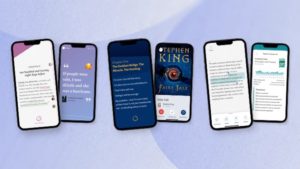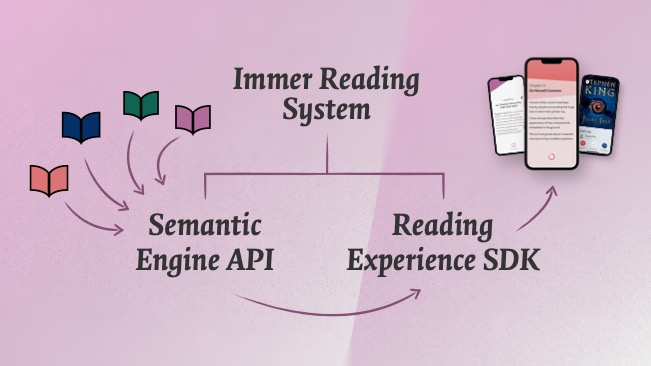ContentShift, the accelerator for startups launched by Börsenverein and dedicated to fostering innovation in the content industry, named Immer its ‘Startup of the Year’ during the 2022 edition of the Frankfurt Book Fair. Aldus Up takes this occasion to get to know its potential with this business case.
We’re all on our digital devices all the time, but reading long-form text on them remains a chore. The innovative Immer Reading System improves the digital reading experience dramatically. By providing a SaaS technology solution, it allows reading platforms of all kinds to reach more readers and engage them longer, becoming more successful businesses.

Digital growth is held back by a poor reading experience
Reading is alive and kicking! Recent US research showed[1] that 57% of Generation Z and Millennials call themselves ‘reader’, which is more than ‘gamer’. More and more of this reading is happening on digital devices, especially the smartphone, but the transition is slow.
Why? One reason is in the quality of the digital reading experience. Of the aforementioned younger generations, as many as 92% prefer reading from paper – and these are the kids who do everything on the phone. With 83% of the world population carrying a smartphone everywhere, the phone plays a key role in the future of reading. Not just to reach new audiences, but also to reach existing audiences in new contexts.
But first, the digital reading experience must be fixed, bringing reading on phones and other digital devices up to date with how people use media and technology today, and with how their attention spans and tastes are evolving.
Solving this will take the brakes off reading’s digital growth – digital still only accounts for 13% of global book sales,[2]but it could be so much more!
Ways to vastly improve digital reading
Scientific reading research, and device and media usage research, reveal various opportunities to make digital reading more attractive, engaging and useful.
For example, younger generations still love to read, but they have to discover books on their own terms, in a way that suits their media tastes and device preferences. There’s a surprisingly large difference in what text display is effective for different individuals, going beyond just font sizes and line heights – typographic style, white space and color can all have a high impact.
Reading from a screen, people comprehend about 15% less than from paper.[3] This is because of much-decreased embodied cognition, which can be improved with design solutions like context markers, varied portion sizes and spatial navigation.
Instead of filling the screen, Immer displays a digestible chunk of text that makes it easier to read and reflect. Ergonomics matter too: just tap anywhere and the next portion is smoothly animated onto the screen. Want to go back? Just drag.
With spare time scattering and attention spans under pressure, people find it increasingly hard to motivate themselves to read (big) books. Splitting books into digestible sessions encourages folks to get started and keep going. And with an automatically generated summary after each session, it becomes easier to reflect on what came before, helping readers to comprehend and recall more. What’s more, the same summary helps readers pick up where they left off.
The Immer Reading System
Immer enables these and many other features with two interoperating, innovative pieces of technology. The first runs on Immer’s servers and is called the Immer Semantic Engine API. This module can be fed with whole catalogs of e-books, that it analyzes at scale, ‘understanding’ the content of each book, allowing for great book suggestions and outputting fully processed text packages to the client application – including things like the aforementioned summaries.
The second module operates in the client application and is called the Immer Reading Experience SDK. This takes the API’s output and renders it flexibly on a screen, making text more fun to read and easier to understand. It attracts more readers, and increases total reading time and revenue, thanks to its improved ergonomics, comprehension and motivational design.
Reading platforms can either have their development team implement the Immer Reading System’s API and SDK directly in their existing or newly built offerings, or use Immer’s white label solution to get a full app with minimal development needs.

Helping more people read more, with more joy
Immer is currently working with a group of launching partners to bring its technology to market, after validating many of its solutions in a Dutch proof of concept, including a joint study with the Radboud University Nijmegen. As many as 88% of respondents preferred Immer to normal e-books. Immer won the Renew the Book Innovation Award 2021 in The Netherlands and, as discussed, the German ContentShift prize.
With its flexible setup, the Immer Reading System has applications in digital book retail, libraries, education, professional contexts and even reading research. Immer offers actionable reading analytics and full access control, allowing for different business models including à la carte book sales, subscriptions, lending and pay-to-read.
No matter where and why they read, Immer helps more people do it more, with more joy.

















